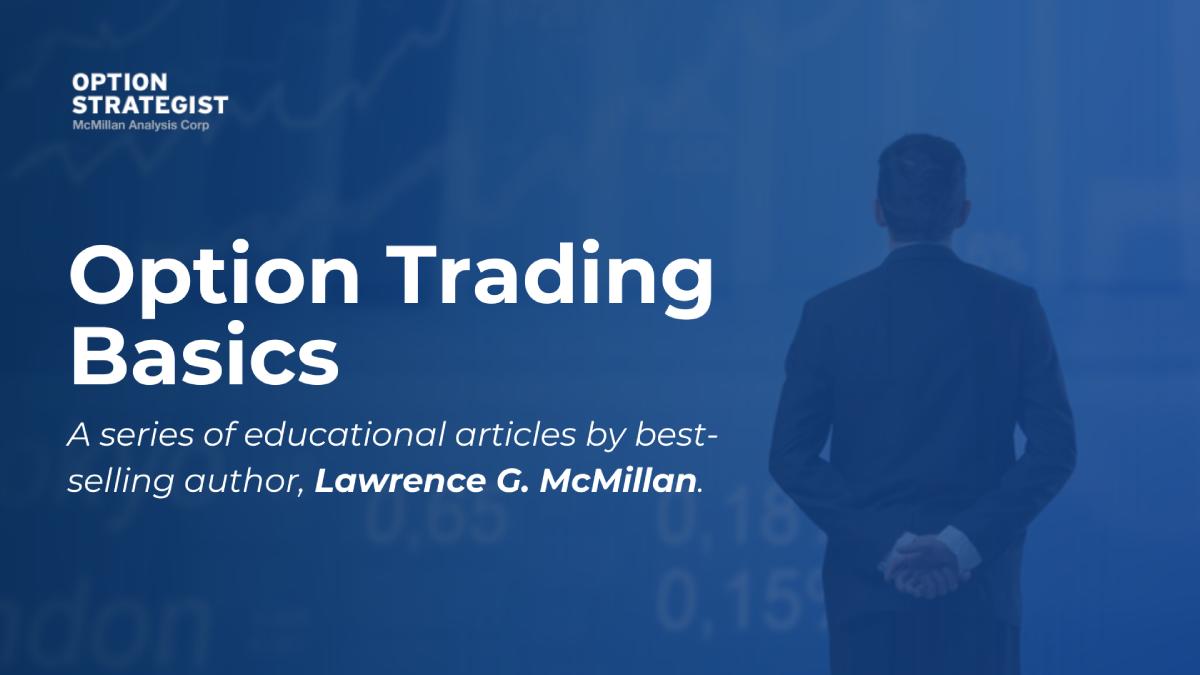
By Lawrence G. McMillan
This article was originally published in The Option Strategist Newsletter Volume 3, No. 21 on November 17, 1994.
Volatility is merely the term that we use to describe how fast a stock, future, or index changes in price. When we speak of volatility in connection with options, there are two types of volatility that are important: historical volatility, which is a number that can be calculated mathematically by seeing how fast the stock has been changing in price over the past 10 days, 20 days, or any other time period that we want to examine. The other type of volatility that is important for option traders is implied volatility. Implied volatility is what the options are "saying" about future volatility: if it is high, then the options are predicting that the underlying instrument is going to become more volatile in the (near) future; if it is low, then the options are predicting that the volatility of the underlying will decrease. Thus there may be a difference between the historical and implied volatility. If the difference is large enough, then one can use options strategies to create a position with an "edge" — the "edge" being the differential between these two types of volatility.
There are only five or six factors that affect an option's price: expiration date, striking price, stock price, short-term interest rates, dividends paid by the underlying (if applicable), and volatility. All of these are known quantities at any point in time, except volatility. That is, we always know how much time is left to expiration, what price the stock is trading at, what the striking price is, and what interest rates and dividends are. Therefore, the only "unknown" in determining the price of an option is the (implied) volatility; hence it is the factor that we speak of when talking about whether options are cheap or expensive.
For example, we might say that "these options are trading with a high implied volatility". In the early days of listed options, people would say "these options are expensive". But now we have come to realize that the options might not really be all that expensive; rather they might be predicting — perhaps quite correctly — an increase in the actual volatility of the underlying stock, future, or index.
It is a matter of some debate as to whether the recent historical volatility or the options' implied volatility is a better predictor of the actual volatility that is going to occur. Option strategists use selling strategies (for example, selling naked options) when they feel implied volatility is going to decrease, and use buying strategies (buying straddles, for example) when they feel it is going to increase.
This article was originally published in The Option Strategist Newsletter Volume 3, No. 21 on November 17, 1994.
© 2023 The Option Strategist | McMillan Analysis Corporation

